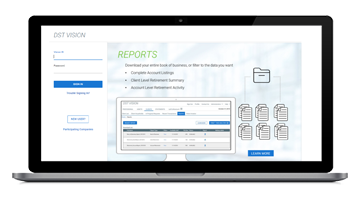Understanding the preferred securities market
Preferred securities occupy a unique niche in financial markets, blending elements of both debt and equity. In this article, we explore the different types of preferred securities and delve into why their versatile nature makes them an attractive option across a wide range of market environments.

What are preferred securities?
Preferred securities are a type of hybrid security often issued by big, stable companies such as banks, utilities, and real estate investment trusts (REITs). These investments combine features of both stocks and bonds, making them an attractive choice for investors looking for a mix of income and growth potential.
There are several distinct types of preferred securities, each with its own characteristics. They sit between bonds and common stocks in a company’s capital structure, with each having their own place and level of priority when it comes to payments and claims.
The preferred securities market is versatile and diverse
When should you invest in preferred securities?
The diverse nature of preferred securities makes them a versatile investment option, offering unique features that can perform well in various economic conditions. This flexibility allows investors to find opportunity within preferreds, regardless of the market environment.
Preferred securities have the potential to do well in a range of market environments
One feature that can vary among each type of preferred security is their coupon structure. Some preferreds have a fixed rate, meaning they pay a set dividend or interest rate for the life of the security. Others have a floating rate, where the dividend or interest adjusts periodically based on a benchmark interest rate. There are also fixed to floating-rate preferreds, which start with a fixed rate for an initial period and then switch to a floating rate based on a specified benchmark.
In a scenario in which inflation is dropping and the federal funds rate is expected to decline, investing in preferred stocks with fixed rate coupons can be beneficial. These fixed rate preferred stocks usually offer higher yields compared with common stocks and many fixed-income securities. As interest rates go down, these fixed rate yields become even more attractive, helping investors avoid reinvestment risk and lock in higher yields for a set period.
In addition, the prices of existing fixed rate preferred stocks tend to rise as interest rates fall due to the inverse relationship between yield and the price of fixed rate securities. This potential for price appreciation, combined with a compelling level of income, makes fixed rate preferred stock an attractive option when interest rates are falling.
When interest rates are rising, junior subordinated debt, which typically has a fixed to floating-rate structure, can be an area of opportunity within preferreds. After the fixed rate period ends, coupon payments will adjust upward with rising rates, giving investors a higher income level. This flexibility can make fixed to floating-rate preferreds, such as junior subordinated debt, an attractive choice when interest rates are likely to increase.
How does economic growth affect the preferreds market?
Investors might also benefit from adjusting their preferreds allocation based on the current economic outlook. By strategically shifting their investments within the preferreds market, they can focus on equity-linked preferreds during economic expansions to capture growth and lean toward more bond-like preferreds during downturns for stability and reliable income.
Mandatory convertible preferreds, or mandys, are a type of preferred stock that automatically converts into common stock at a predetermined date. This feature makes mandys an attractive option during periods of strong economic growth, allowing investors to benefit from the potential increase in the issuing company’s stock price.
In periods in which economic growth is likely to slow down or contract, investors might consider tilting toward baby bonds. Baby bonds hold a higher priority in the capital structure compared with other preferred securities, reducing their likelihood of default even in challenging market conditions.
How can investors benefit from an active preferred securities ETF?
Given the wide range and complexity of the preferred securities market, an actively managed ETF can potentially offer significant value for investors. While passive ETFs tend to focus on only a subset of the preferreds market, an experienced portfolio management team can strategically adjust an active ETF’s holdings in response to changing market conditions. This flexibility allows active managers to navigate between different areas, optimizing the balance between income generation, capital preservation, and the potential for price appreciation. As a result, an actively managed ETF can provide a preferred securities allocation that’s well positioned regardless of the current economic outlook.
Important disclosures
Important disclosures
Investing involves risks, including the potential loss of principal. There is no guarantee that a fund’s investment strategy will be successful. Fixed-income investments are subject to interest-rate and credit risk; their value will normally decline as interest rates rise or if an issuer is unable or unwilling to make principal or interest payments. Investments in higher-yielding, lower-rated securities include a higher risk of default. Municipal bond prices can decline due to fiscal mismanagement or tax shortfalls, or if related projects become unprofitable. It’s possible that an active trading market for fund shares will not develop, which may hurt your ability to buy or sell fund shares, particularly in times of market stress. Trading securities actively can increase transaction costs, therefore lowering performance and taxable distributions. Liquidity—the extent to which a security may be sold or a derivative position closed without negatively affecting its market value, if at all—may be impaired by reduced trading volume, heightened volatility, rising interest rates, and other market conditions. To the extent that the fund invests in bonds that are subject to the alternative minimum tax (AMT), the income paid by the fund may not be entirely tax-free to all investors. Tender option bonds use leverage that magnifies both positive and negative returns, which increases the fund risk by magnifying the volatility of returns and could lead to termination of the Tender Option Bond trust. In that event, the fund may sell assets to purchase the trust’s floating-rate security, which could negatively affect fund performance or liquidate the trust’s assets. Fund distributions generally depend on income from underlying investments and may vary or cease altogether in the future. Shares may trade at a premium or discount to their NAV in the secondary market. These variations may be greater when markets are volatile or subject to unusual conditions. Please see the fund’s prospectus for additional risks.
The views presented are those of the author(s) and are subject to change. There is no guarantee that any investment strategy illustrated will be successful or achieve any particular level of results. This is for informational purposes only and is not intended to be, nor shall it be interpreted or construed as, a recommendation or providing advice, impartial or otherwise, regarding any security, mutual fund, ETF, sector, or index. Investors should consult with their financial professional before making any investment decisions. Past performance does not guarantee future results.
JHS-656999-2024-12-16






